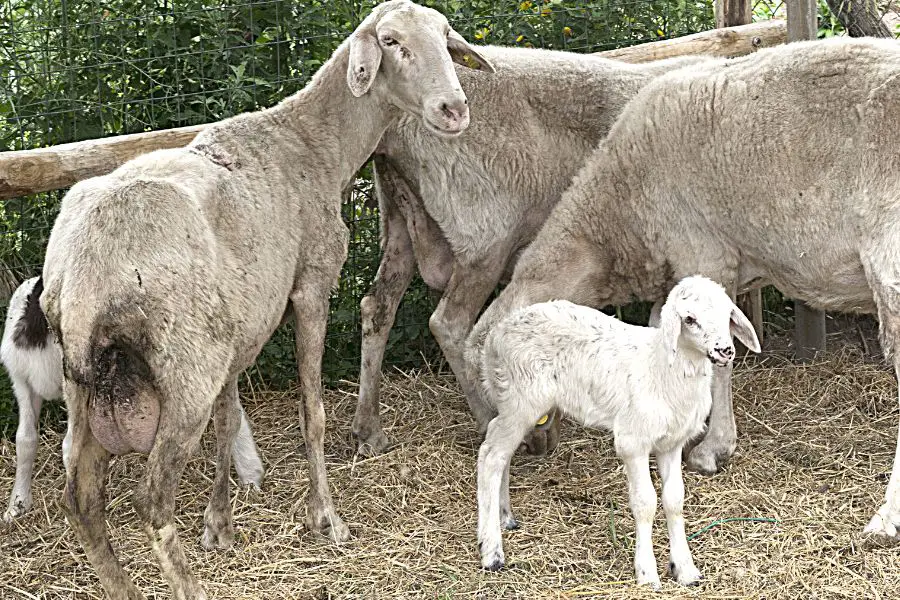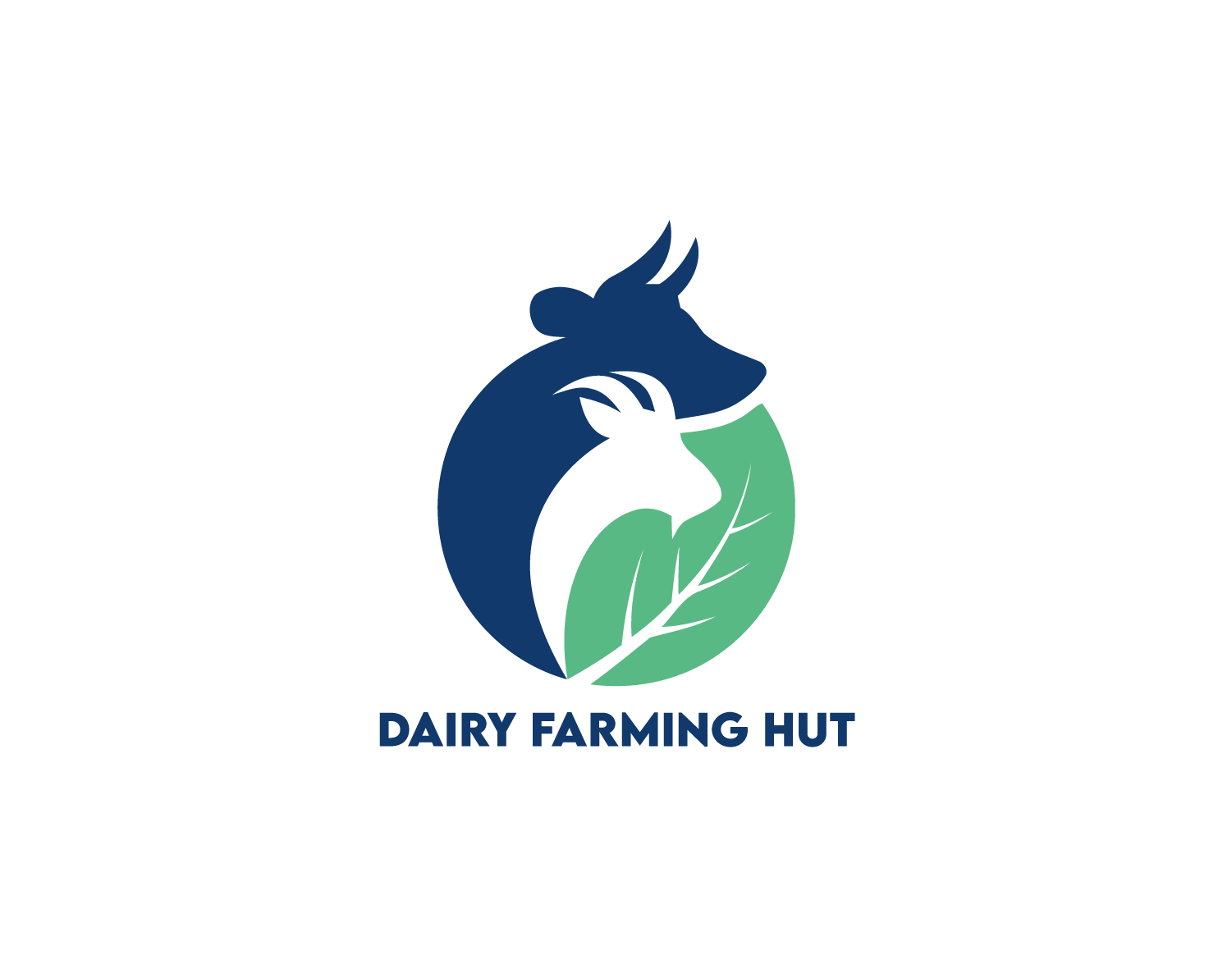On commercial dairy farms, lambs are often taken away from their mothers a day or two after they are born. This is quite traumatic for the lambs and the ewes. The wonderful thing about having a small-scale sheep dairy is that you can approach the process in a more ethical, humane way.
A lamb should be weaned when they are between 3 and 4 months old. Keep the lamb and the ewe together because it will learn to eat solid food from its mother. Gradually reduce the amount of time the lamb spends with its mother, and keep a close eye on both animals for signs of stress or illness.
Weaning is a challenging process for the farmer, the ewes, and the little lambs. This article explains the best way to wean lambs from their mothers. Understanding how to make the weaning process less stressful for the animals is essential. It is important to take things slowly.
Will Lambs Naturally Wean?

In the wild, there is no shepherd or farmer to intervene and separate lambs from their mother. Naturally, lambs wean when they are around 6 months old.
Ewes produce the maximum amount of milk about 3 or 4 weeks after giving birth, and thereafter their milk production starts to decline. By around 10 weeks after lambing, ewes only produce half the amount of milk they did at peak production.
Lambs start to nibble on grass and forage quite soon after birth, and by week 3, their digestive systems can process solid feed. Therefore, lambs’ milk requirements decline as their mothers’ production starts to drop off.
Natural weaning happens when ewes “dry up” or stop lactating. This generally occurs when they come back into oestrus and are ready to mate and produce another lamb.
However, a growing number of small to medium-scale dairy farmers are realizing the benefits of a more natural approach to the weaning process.
How Old Should Lambs Be Before Weaning?
The age at which lambs should be weaned depends on a few factors, like the size of the dairy operation, the amount of pasture that is available, and the availability of other feed.
It is generally recommended that lambs are weaned when they are between 3 and 4 months old. Farmers do not usually wait as long as six months to wean lambs, but some do, especially if there is more than enough pasture available.
On larger sheep dairies, lambs are generally weaned at 2 months old. This is not ideal. Lambs should preferably be at least 3 months old.
A good rule of thumb is to wait until a lamb has tripled its weight at birth before weaning.
Prepare Lambs For Weaning
It is essential to start preparing lambs for weaning around two weeks before the process starts. Lambs must be given all their vaccinations before weaning begins.
Male lambs must be castrated before they are weaned, and all lambs should preferably be dewormed and tagged.
Prepare Ewes For Weaning
It is important to stop feeding ewes any grain feed during weaning. Switch them to low-quality hay. This will help their milk dry up.
Ewes are more susceptible to developing mastitis during weaning, especially in the first few days of the process. Signs of mastitis are a swollen, red udder that feels hot to the touch. Look out for these signs!
To prevent discomfort and mastitis, milk the ewes to relieve some of the pressure on their udders, but do not remove all the milk as this will stimulate them to keep producing.
How To Wean A Lamb From Its Mother?
To make weaning as stress-free for the lambs as possible, they should be kept in the same pen they spent their first few months with their mothers. It is a familiar environment, so they will know where to find water and feed.
For the first week of the weaning process, separate the ewes from the lambs for between 4 and 6 hours each day. Then, move the ewes to a separate pen, far away from their lambs.
Gradually increase the amount of time the ewes spend away from the lambs. For example, increase the time by 4 to 6 hours each week until the lambs are completely separated from their mothers.
This gradual style of weaning means the lambs and ewes will be more relaxed and less vocal during the process. In addition, studies have shown that the level of the stress hormone cortisol is lower in gradually weaned lambs.
Lambs that are gradually weaned also tend to gain weight faster than lambs that are abruptly separated from their mothers.
After the lambs are completely independent of the ewes, they should be given feed supplements. This decreases the risk of disease and internal parasites like worms and coccidia.
Studies have also shown that lambs’ stress levels are significantly lower if the farmer gently strokes lambs and speaks to them for an hour a day after weaning. This human contact also makes lambs easier to manage as they grow up.
Also Read: How Do You Wean A Baby Goat from Its Mother?
What To Feed Lambs At Weaning?
Lambs should be fed the same thing before, during, and after weaning. It is best to provide lambs creep feed (AKA starter grain).
The creep feed should contain a minimum of 18% protein. This supports the development of their digestive systems, especially their rumen.
It is crucial to provide lambs with plenty of fresh water. Room temperature water is recommended. It helps to add a multi-species electrolyte to the water to support hydration and minimize stress.
- Made with highly palatable ingredients to maximize intake.
- Enhanced with a rich cherry flavor.
- High fat for optimal bloom on young lambs.
- Includes ingredients to support strong immunity and gut health.
- Medicated with Deccox for the prevention of coccidiosis.
Should You Use A Nose Ring To Wean Lambs?
Weaning nose rings are C-shaped plastic devices that are covered in small spikes. They clip onto lambs’ noses between their nostrils.
Nose rings prevent lambs from suckling from their mothers. The spikes feel uncomfortable against the ewes’ udders, so they reject their lambs’ attempts to suckle.
This may sound cruel, but it is actually a very low-stress method of weaning because the lambs do not have to be physically separated from their mothers.
Preventing lambs from suckling causes ewes’ udders to dry up. The ring only needs to be worn for two weeks, so it speeds up the weaning process significantly. Nose rings are around 90% effective.
If you have a small-scale sheep dairy and do not have the capacity to separate lambs and ewes daily, using nose rings for weaning is an excellent option.
The rings are reusable, they do not affect the lambs’ ability to graze, and they greatly reduce the stress of weaning. Therefore, it is a great alternative to gradual weaning.
Conclusion
There are many different methods to wean lambs from their mothers, but by far, the most humane and low-stress way is to wean gradually or to use a nose ring. Depending on the size of your dairy operation and the space you have available, you should go with the option that is best for you and your flock.

